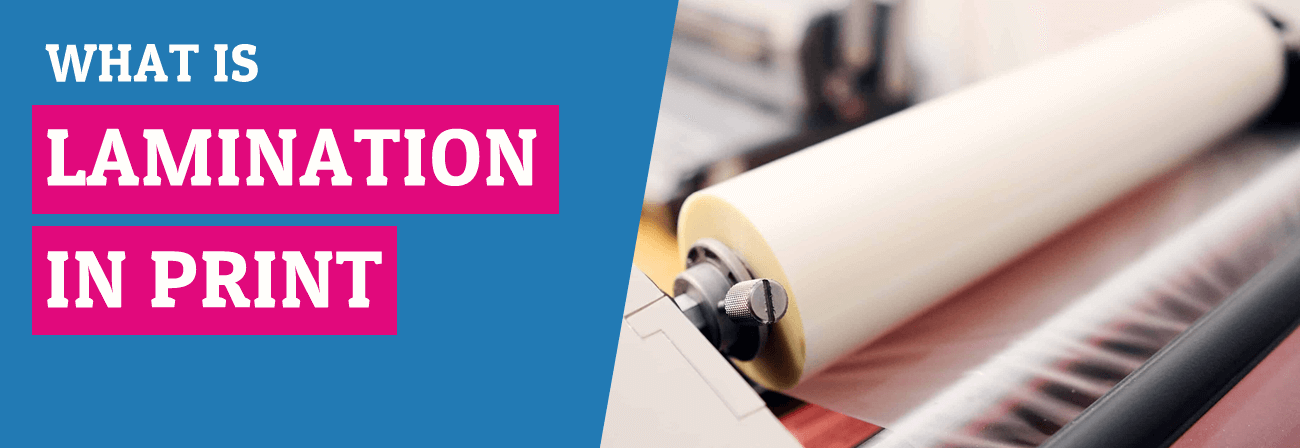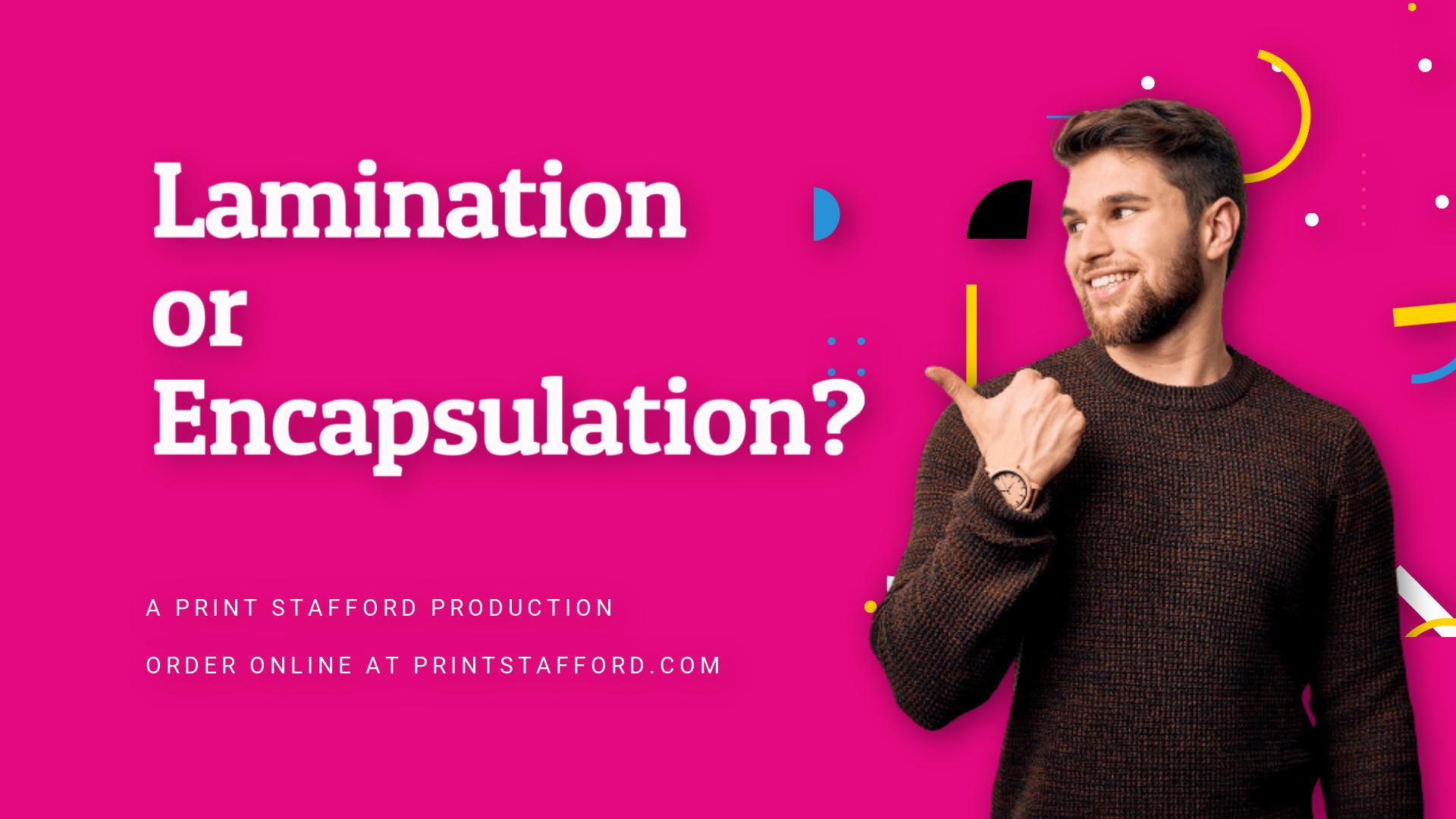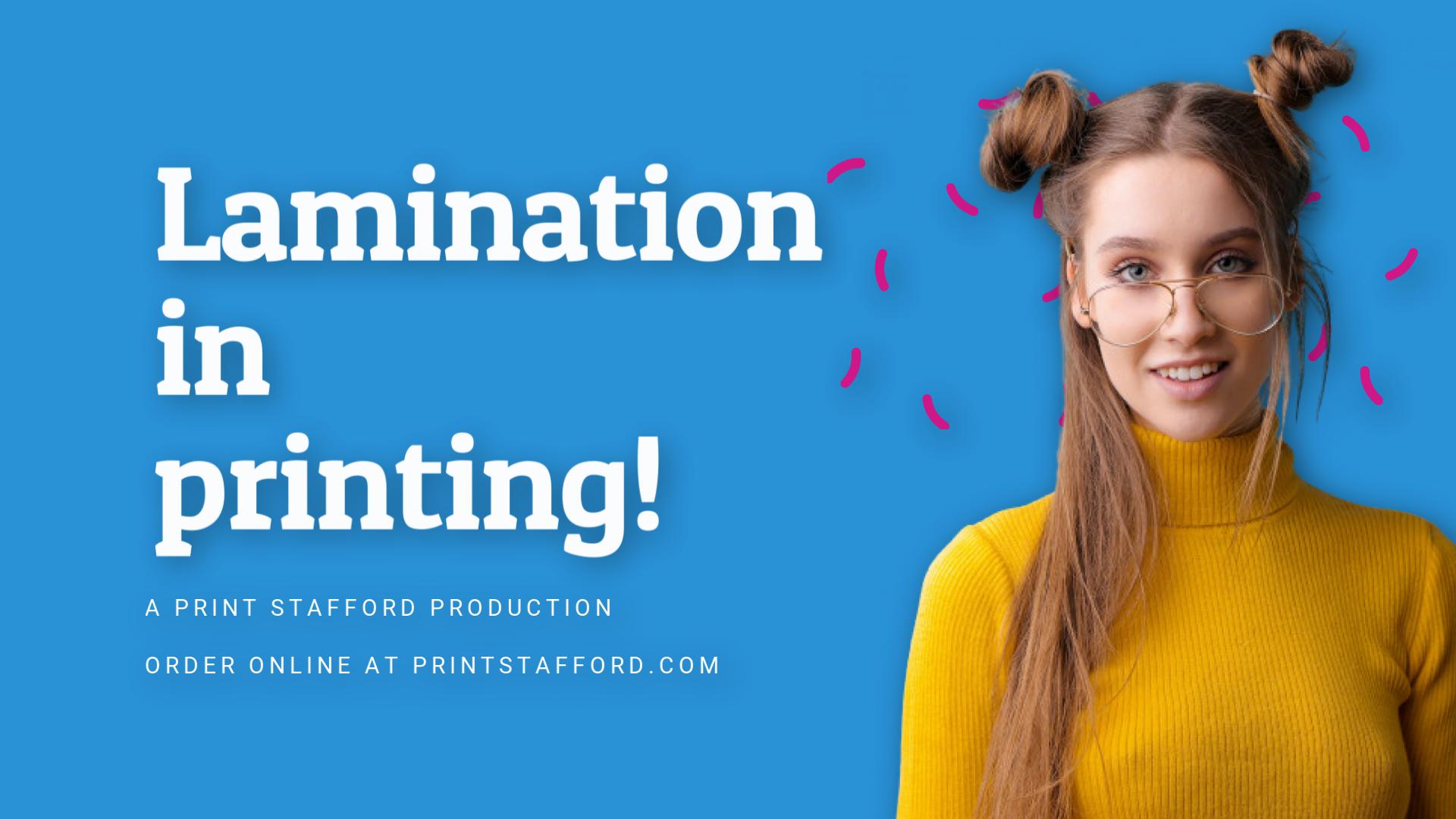Free nationwide shipping on all orders!
Simply, Affordable, Quality Print & Design in Staffordshire and the UK
Free nationwide shipping on all orders!
Simply, Affordable, Quality Print & Design in Staffordshire and the UK

In this guide, we’ll be answering all the most common questions about lamination in print including:- What is lamination? What’s the difference between lamination types? And what benefits does lamination offer? If you read through, you can make sure you choose the right choice making sure you have success with your print!
Lamination in print is a finishing process used by printing companies in the industry where a thin layer of plastic is applied through pressure and heat to paper or card stock. If you have a Booklet, Leaflet or flyer, Business Card or book anywhere in your vicinity, then we’re almost certain you’ll find an example of lamination in print right there.
Laminating protects and is generally used to protect the paper from wear and tear, but it can also give your final printed product a truly special finish, helping you establish a professional and refined brand identity.
Lamination in print is not to be confused with the thick plastic casing of pouch laminators you probably used in school. Whilst they can be known as lamination pockets this is called encapsulation. Lamination in printing is more advanced and delivers a smooth, polished finish to your printed product.
Here is a little video showcasing the 2 types.
You can find more helpful videos on our Youtube Channel.

If you didn’t watch the video above let us share this information with you. Both methods use the process of bonding a clear plastic film onto your printed matter. Encapsulation extends past the sides of the printed piece whereas with lamination the plastic coating ends on the edge of the printed piece. Both methods add strength and rigidity, however, as encapsulation seals the print completely it can be easier to clean and is ideal for products being used in dirty or damp environments. If for example, a cafe wanted outside menus that were fully waterproof then encapsulation would be a better choice.
Encapsulating films are typically more costly than lamination films and because of this lamination offers lower price points
At Print Stafford, we offer the 3 most popular types of lamination in printing. These include Matte, Gloss and Soft Touch Lamination.
Matt Lamination – Just as its name suggests, matt lamination gives a smooth, no-shine finish. It is one of the most popular types and is often chosen by businesses that prefer a more ‘natural’ look
Gloss Lamination – On the opposite end of the spectrum to matte is gloss lamination with its high-shine finish. This is commonly used on print products that you want to have a big impact such as restaurant menus and magazine covers
Soft Touch Lamination – Soft touch has a smooth velvety texture. This tactile finish is almost like suede and is perfect for laminated printed products that you know will be handled often like Business Cards. Soft-touch lamination can often be called velvet lamination.
Well, it can be all! Technically in the English language, it is Matte – with an ‘e’ although it is widely used without within the print industry. We double-checked this for those who know at Collins Dictionary just to make sure.
Matt and Gloss lamination are the two most popular lamination types in the printing industry, but which lamination type to choose is entirely up to you and your project. As we outlined above, matt lamination offers a non-reflective matte finish while gloss lamination opts for a high shine, so keep in mind whether your lamination printing project is best suited to reflect light or absorb it.
In our experience, matte lamination is best suited for printed products that will be situated under direct lighting, won’t be handled too excessively and for businesses suited to a modern, sophisticated image.
On the other hand, gloss laminate provides a slightly higher level of protection than matte since it can be easily wiped clean. This makes it perfect for printed products being handled a lot, like presentation folders.
Gloss lamination also has a strong visual impact so if your printed design has strong colours, it could be the best choice for you.
Gloss lamination was popular with business cards, however nowadays most businesses choose to go with a matt finish with additional embellishments as this looks more professional.

Available on almost every product our matt and soft touch laminated products are two additional finishes known as Spot UV and Foiling. Spot UV involves using a raised, clear polymer varnish with a nice glossy finish on only selected parts of your print design. For example, you could use Spot UV on a particular part of your text or your logo to draw more attention to that area.
Here at Print Stafford, we offer a choice of 2 Spot UV finishes premium which measures 14 microns or Luxury which measures a massive 43 microns thick. Both are great choices depending on your print project.
Meanwhile, Foil lamination uses heat and an opaque foil colour to create an unmissable contrasting finish on your design in gold or silver. Foiling looks particularly striking against dark artwork and undoubtedly evokes a luxurious and elegant brand image.
Lamination in printing has a huge host of benefits. For many businesses, the main benefit is the increased durability it offers the printed materials. It allows them to withstand excessive handling and use, adds protection against fingerprints and stains and can also greatly reduce the likelihood of marks and tears occurring.
Another huge advantage to lamination is how it can greatly improve the look of your printed product, something that is a necessity for any business looking to establish a strong and professional brand image.
It not only looks smart but will actually enhance the appearance of the materials which consequently will allow your print design to have more impact on the consumer.
Generally, matte lamination tones down colour and offers a smooth, modern texture while gloss lamination instantly makes colours look more vibrant. Soft touch lamination makes the artwork look deeper and richer.
At Print Stafford, we know the importance of conveying your brand image professionally and properly, so we are proud to offer a huge range of lamination printing services on almost all of our products. From Brochures to folded leaflets, business cards and flyers as long as the paper stock is above 250gsm in weight then typically they are available with lamination.
If you require any assistance choosing the best lamination type for you or you need assistance with designing a laminated print product, get in touch with our team today.
